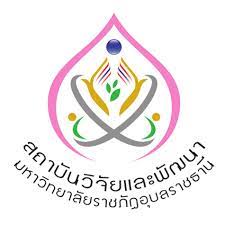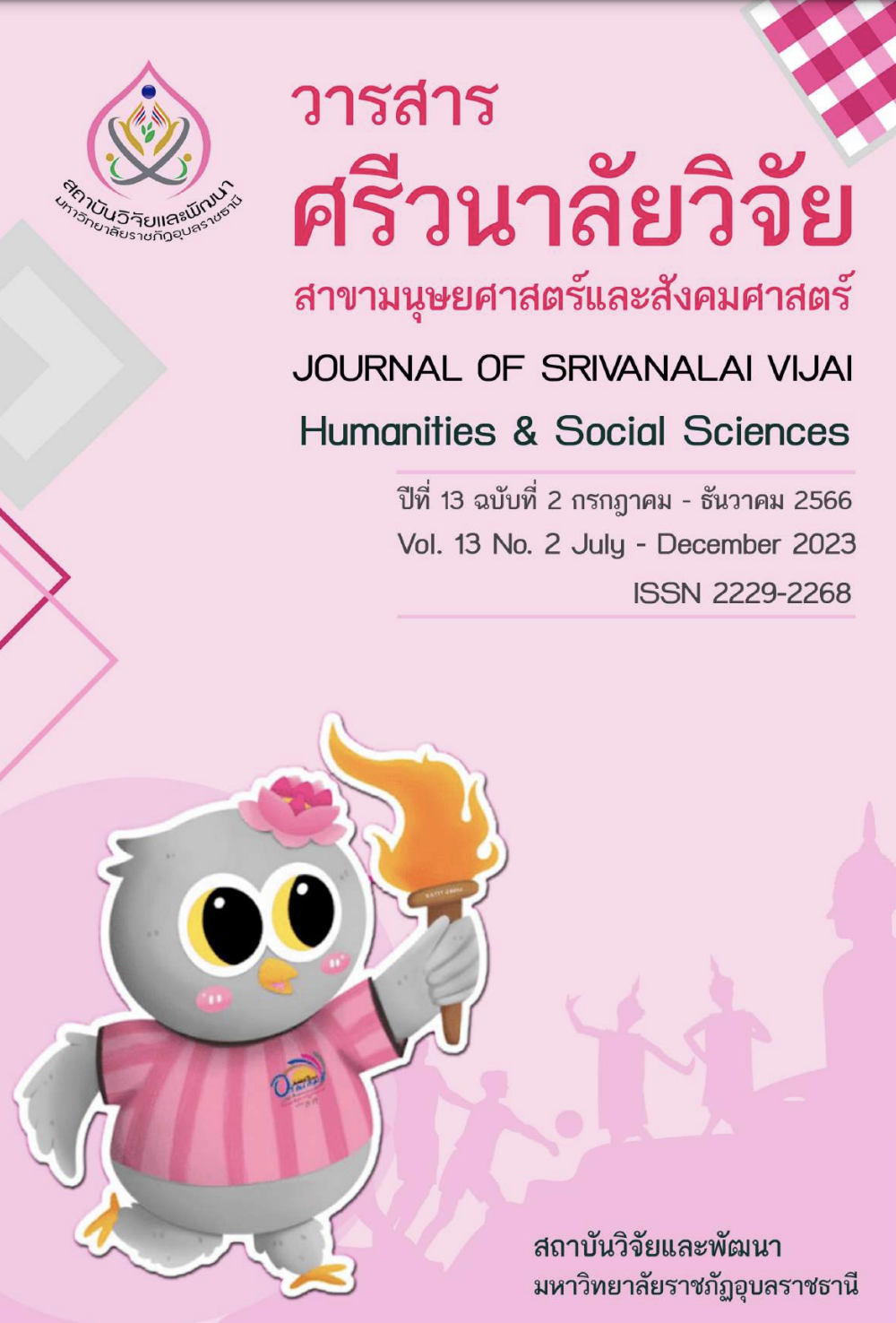ปัจจัยเชิงสาเหตุที่มีอิทธิพลต่อการธารงบุคลากรเจนเนอเรชั่นวายขององค์กรธุรกิจ ขนาดกลางภาคการค้าในภาคตะวันออกเฉียงเหนือ
Main Article Content
บทคัดย่อ
การวิจัยนี้มีวัตถุประสงค์เพื่อ 1) เพื่อศึกษาปัจจัยเชิงสาเหตุที่มีอิทธิพลต่อการธารงบุคลากรเจนเนอ เรชั่นวายขององค์กรธุรกิจขนาดกลางภาคการค้าในภาคตะวันออกเฉียงเหนือ 2) เพื่อพัฒนาโมเดลความสัมพันธ์เชิง สาเหตุของปัจจัยมีอิทธิพลต่อการธารงบุคลากรเจนเนอเรชั่นวายขององค์กรธุรกิจขนาดกลางภาคการค้าในภาค ตะวันออกเฉียงเหนือ และ 3) ศึกษาความสอดคล้องของโมเดลความสัมพันธ์เชิงสาเหตุตามสมมติฐานกับข้อมูลเชิง ประจักษ์ ประชากรกลุ่มเป้าหมายได้แก่ ผู้ประกอบการ ผู้จัดการ และพนักงานขององค์กรธุรกิจ ขนาดกลาง ภาคการค้า ในภาคตะวันออกเฉียงเหนือ โดยจานวนองค์กรธุรกิจขนาดกลาง ภาคการค้า มีจานวน 838 แห่ง กลุ่มตัวอย่างจานวน 600 คน จากการสุ่มแบบหลายขั้นตอน (Multi-Stage Sampling) สถิติที่ใช้ในการศึกษาและวิเคราะห์ข้อมูลของ งานวิจัยนี้ประกอบด้วย สถิติพื้นฐานเพื่อหาค่าแจกแจงความถี่ค่าร้อยละในการวิเคราะห์ข้อมูลสภาพของผู้ตอบ แบบสอบถาม พร้อมกับวิเคราะห์ปัจจัยสารวจ (Exploratory Factor Analysis) และการวิเคราะห์โมเดลสมการโครงสร้าง ประกอบด้วย การวิเคราะห์โมเดลการวัด (Measurement Model) การวิเคราะห์โมเดลโครงสร้าง (Structure Model) เพื่อหาความสอดคล้องของโมเดลสมการโครงสร้างกับข้อมูลเชิงประจักษ์
ผลการวิจัย พบว่า 1) ค่าเฉลี่ยของปัจจัยการบริหารทรัพยากรมนุษย์ อยู่ในระดับมาก (ค่าเฉลี่ย = 3.87), ค่าเฉลี่ยของ ปัจจัยด้านองค์กรมีค่าเฉลี่ยอยู่ในระดับมาก (ค่าเฉลี่ย= 4.16) และ ค่าเฉลี่ยของการธารง บุคลากรเจนเนอร์ชั่น วายอยู่ในระดับมาก (ค่าเฉลี่ย= 4.12), 2)ปัจจัยด้านการบริหารทรัพยากรมนุษย์ โมเดลมีความ สอดคล้องกลมกลืน กับข้อมูลเชิงประจักษ์ ด้วยค่า Chi-square = 2291.583, df = 831, p = 0.000, Chi- square/df = 2.758, CFI = 0.915, GFI = 0.864, AGFI = 823, SRMR = 0.009, RMSEA = 0.053, ปัจจัยด้าน องค์กร โมเดลมีความสอดคล้องกลมกลืน กับข้อมูลเชิงประจักษ์ ด้วยค่า Chi-square = 544.594, df = 169, p = 0.000, Chi-square/df = 3.222, CFI = 0.955, GFI = 0.932, AGFI = 0.907, SRMR = 0.015, RMSEA = 0.060 และ ปัจจัยด้านการธารงรักษา บุคลากรเจนเนอเรชั่นวาย โมเดลมีความ สอดคล้องกลมกลืนกับข้อมูลเชิงประจักษ์ ด้วยค่า Chi-square = 70.540, df = 25, p = 0.000, Chi-square/df = 2.822, CFI = 0.999, GFI = 0.978, AGFI = 0.952, SRMR = 0.005, RMSEA = 0.054 และ 3) การบริหารทรัพยากร มนุษย์มีอิทธิพลทางตรงต่อการ ธารง บุคลากรเจนเนอเรชั่นวายขององค์กร ธุรกิ ขนาดกลางภาคการค้าในภาคตะวันออกเฉียง เหนือ ขนาดอิทธิพล เท่ากับ 3.3.376 อย่างมีนัยสาคัญทาง สถิติระดับที่ .001 ปัจจัยด้านองค์กรมีอิทธิพล ทางตรงต่อการธารง บุคลากรเจนเนอเรชั่นวายขององค์กรธุรกิจ ขนาดกลางภาคการค้าในภาคตะวันออกเฉียงเหนือ ขนาดอิทธิพลเท่ากับ 3.269 อย่างมีนัยสาคัญทางสถิติระดับที่ .001
Article Details
เอกสารอ้างอิง
กรรณิการ์สุขเกษมและสุชาติประสิทธิ์รัฐสินธุ์. (2544). นานานวตกรรมวิธีวิทยาการวิจัย. กรุงเทพฯ: บริษัท เฟื่องฟ้า พริ้นติ้ง จากัด.
จตุรงค์ ศรีวงษ์วรรณะ. (2558). การบริหารทรัพยากรมนุษย์. กรุงเทพฯ: โอเดียนสโตว์.
สุชาติ ประสิทธ์ิรัฐสินธ์ุ. (2544).ระเบียบวิธีการวิจัยทางสังคมศาสตร์. (พิมพ์ครั้งที่ 11). กรุงเทพฯ: บริษัทเฟื่องฟ้า
พร้ินต้ิง จากัด.
สานักงานส่งเสริมวิสาหกิจขนาดกลางและขนาดย่อม. (2563ก). จานวนผู้ประกอบการรวมตามนิยามใหม่. สืบค้น 25
มกราคม 2564, จาก https://app.powerbi.com/view?r=eyJrIjoiOTM2NWQwMzAtNDQ4Ny00M2ZiLThjNzEtZjczNG Q5YmQ3MjUzIiwidCI6ImExZmZjMjhhLTEzZmMtNDhiMC05NGRmLWYyYWIyOGUwNWNhNSI sImMiOjEwfQ==
Arar, K., & Avidov-Ungar, O. (2020). Superintendents’ perception of their role and their
professional development in an era of changing organizational environment. Leadership
and Policy in Schools, 19(3), 462-476.
Armstrong, M., & Taylor, S. (2020). Armstrong's handbook of human resource management
practice. (15th edition). New York: KoganPage.
Ayoko, O. B., & Ashkanasy, N. M. (Eds.). (2019). Organizational Behaviour and the Physical
Environment. New York: Routledge.
Bratton, J., & Gold, J. (2017). Human resource management: theory and practice. (2nd edition).
Great Britain: Palgrave.
Collings, D. G., Wood, G. T., & Szamosi, L. T. (2018). Human resource management: A critical
approach. New York: Routledge.
Entebang, H., & Harrison, R. T. (2019). Corporate Entrepreneurship Performance: Findings From
Government-Linked Companies in Malaysia.Journal of Public Administration and
Governance, 9(4), 248-264.
วารสารศรีวนาลยั วิจัย ปีที่ 13 ฉบับที่ 2 กรกฎาคม - ธันวาคม 2566
Forgács-Fábián, S. (2021). Retention of Millennials in the Voluntary Sector: How Can Organizations
Not Only Engage but Also Retain This Emerging Generation?, in New Horizons in Business
and Management Studies. Conference Proceedings. Corvinus University of Budapest, pp.
-87
Hair, J., Black, B., Babin, B., Anderson, R. and Tatham, R. (2006). Multivariate data analysis. (6th ed.). New Jesey: Prentic-Hall.
Gharib, M. N., Kahwaji, A. T., & Elrasheed, M. O. (2017). Factors affecting staff retention strategies
used in private Syrian companies during the crisis. International Review of Management
and Marketing, 7(2), 202-206.
Manogharan, M. W., Thivaharan, T., & Rahman, R. A. (2018). Academic Staff Retention in Private
Higher Education Institute--Case Study of Private Colleges in Kuala Lumpur. International
Journal of Higher Education, 7(3), p.52-78.
Oludayo, O. A., Falola, H. O., Obianuju, A., & Demilade, F. (2018). WORK-LIFE BALANCE INITIATIVE
AS A PREDICTOR OF EMPLOYEES'BEHAVIOURAL OUTCOMES.Academy of Strategic
Management Journal, 17(1), 1-17.
O’riordan, J. (2017). The practice of human resource management. N.P.: State of the Public
Service Series.
Saha, R. (2016). Factors influencing organizational commitment–research and
lessons. Management Research and Practice, 8(3), 36-48.
Schroth, H. (2019). Are you ready for gen Z in the workplace?. California Management
Review, 61(3), 5-18.
Storey, J. (2016). A Handbook of Human resource management. (10th edition). United Kingdom:
Edward Elgar Publishing Limited
Toban, C., & Sjahruddin, H. (2016). The antecedent and consequence of Organizational
Commitment and Job Satisfaction. Journal of Business and Management Sciences, 4(2),
-33.
Wakabi, B. M. (2016). Leadership style and staff retention in organizations. International Journal of
Science and Research, 5(1), p. 412-416.


